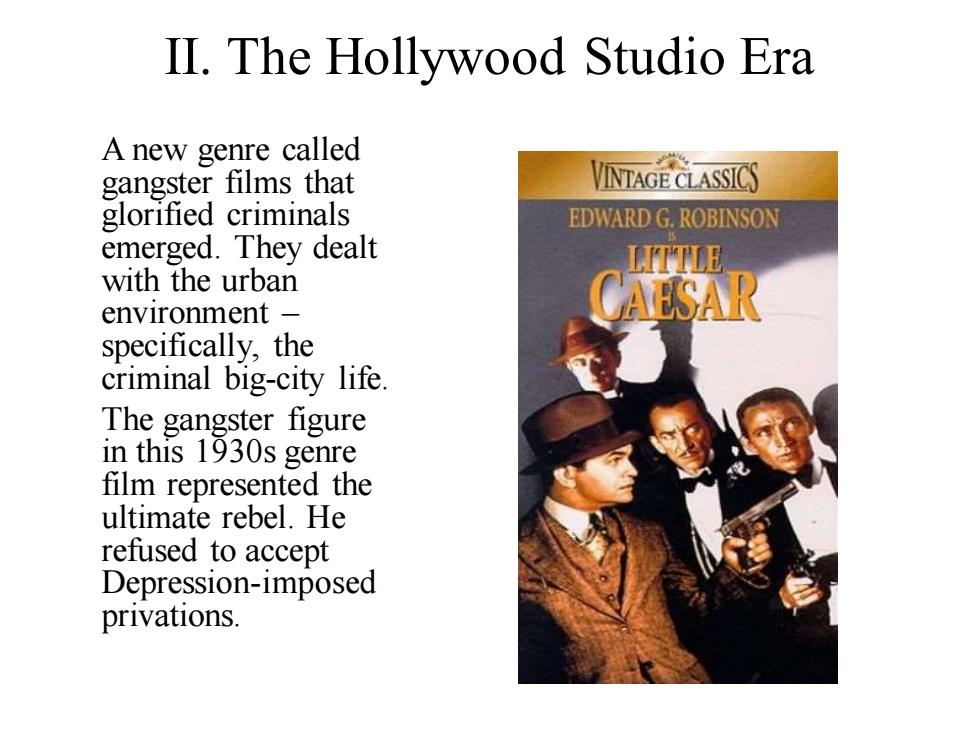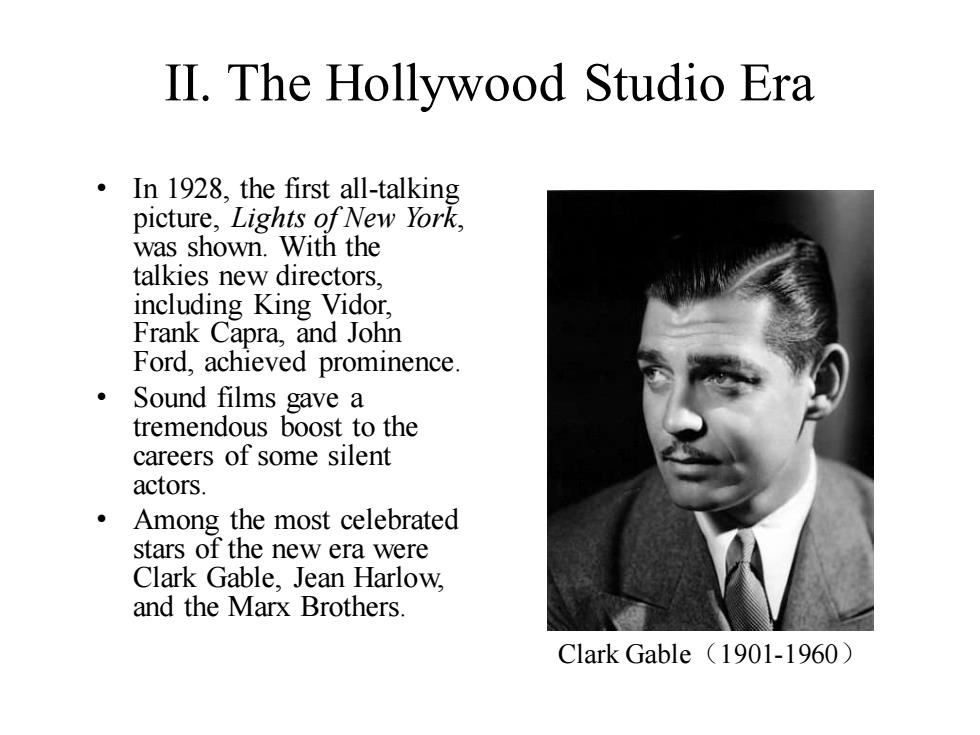
The"little three"studios:Columbia.Universal and United Artists INIYERSAL TUDIOS COLUMBIA
The “little three” studios: Columbia, Universal and United Artists

II.The Hollywood Studio Era American films prior to World War I had often been preachy Roaring 20s JAZZ and sentimental,set in a working-class milieu,while those made in the 1920s reflected changing social and moral standards. Cynicism and sensuality among the upper classes characterized many of the Jazz Age of the 1920s. Hollywood during the Jazz Age
II. The Hollywood Studio Era • American films prior to World War I had often been preachy and sentimental, set in a working-class milieu, while those made in the 1920s reflected changing social and moral standards. • Cynicism and sensuality among the upper classes characterized many of the Jazz Age of the 1920s. Hollywood during the Jazz Age

II.The Hollywood Studio Era A new genre called gangster films that VINTAGE CLASSICS glorified criminals EDWARD G.ROBINSON emerged.They dealt LITTLE with the urban environment CAESAR specifically,the criminal big-city life. The gangster figure in this 1930s genre film represented the ultimate rebel.He refused to accept Depression-imposed privations
II. The Hollywood Studio Era A new genre called gangster films that glorified criminals emerged. They dealt with the urban environment – specifically, the criminal big-city life. The gangster figure in this 1930s genre film represented the ultimate rebel. He refused to accept Depression-imposed privations

II.The Hollywood Studio Era In 1928,the first all-talking picture,Lights ofNew York. was shown.With the talkies new directors. including King Vidor, Frank Capra,and John Ford,achieved prominence. Sound films gave a tremendous boost to the careers of some silent actors. Among the most celebrated stars of the new era were Clark Gable,Jean Harlow, and the Marx Brothers. Clark Gable (1901-1960)
II. The Hollywood Studio Era • In 1928, the first all-talking picture, Lights of New York, was shown. With the talkies new directors, including King Vidor, Frank Capra, and John Ford, achieved prominence. • Sound films gave a tremendous boost to the careers of some silent actors. • Among the most celebrated stars of the new era were Clark Gable, Jean Harlow, and the Marx Brothers. Clark Gable(1901-1960)